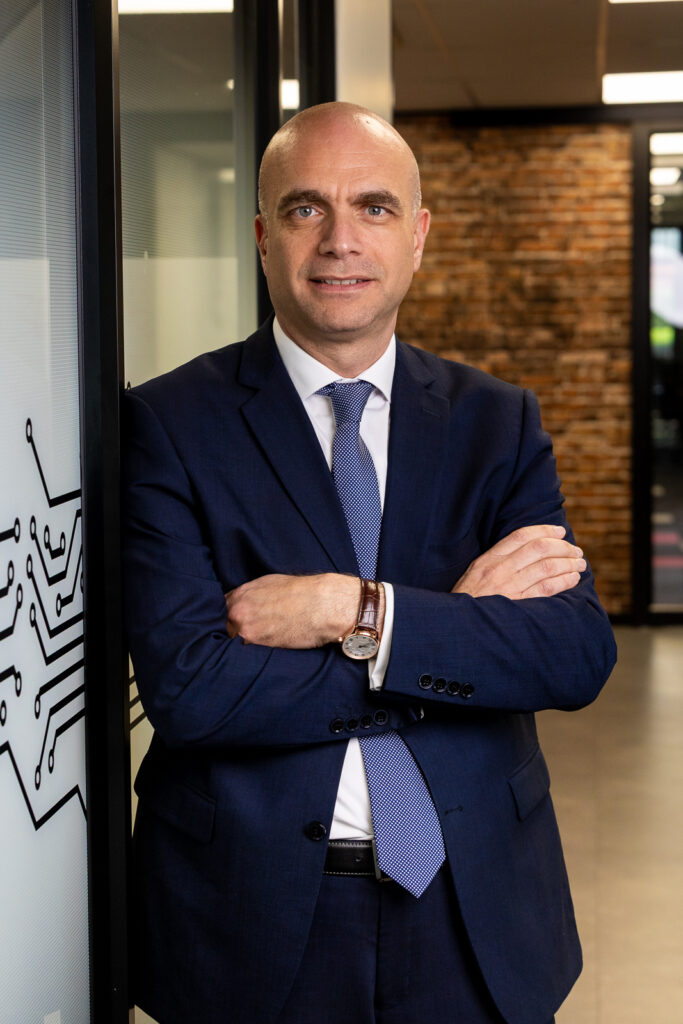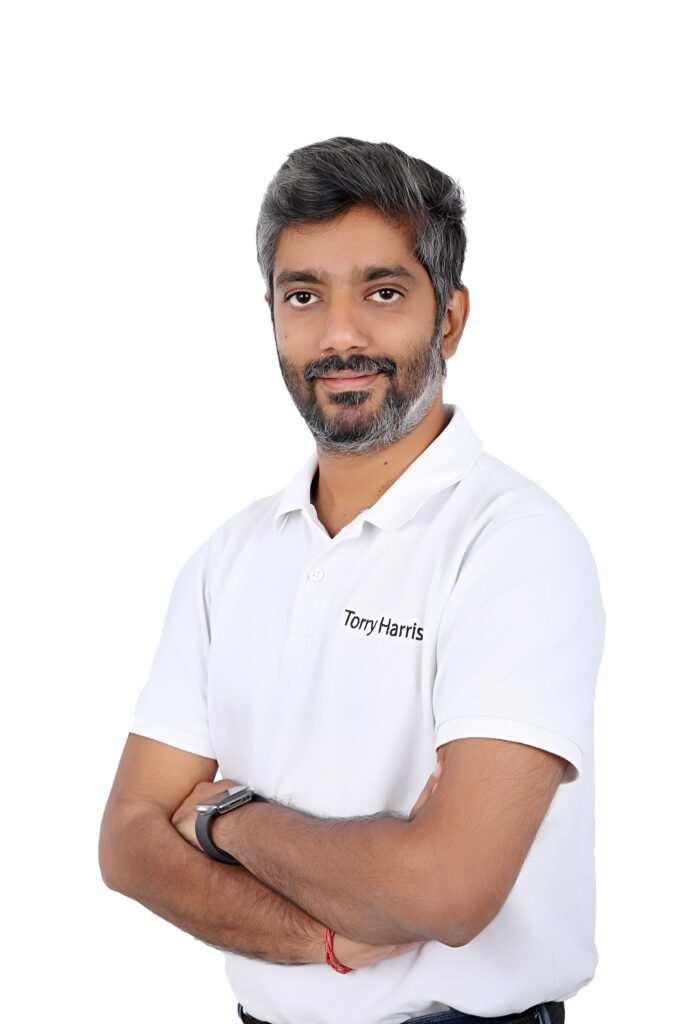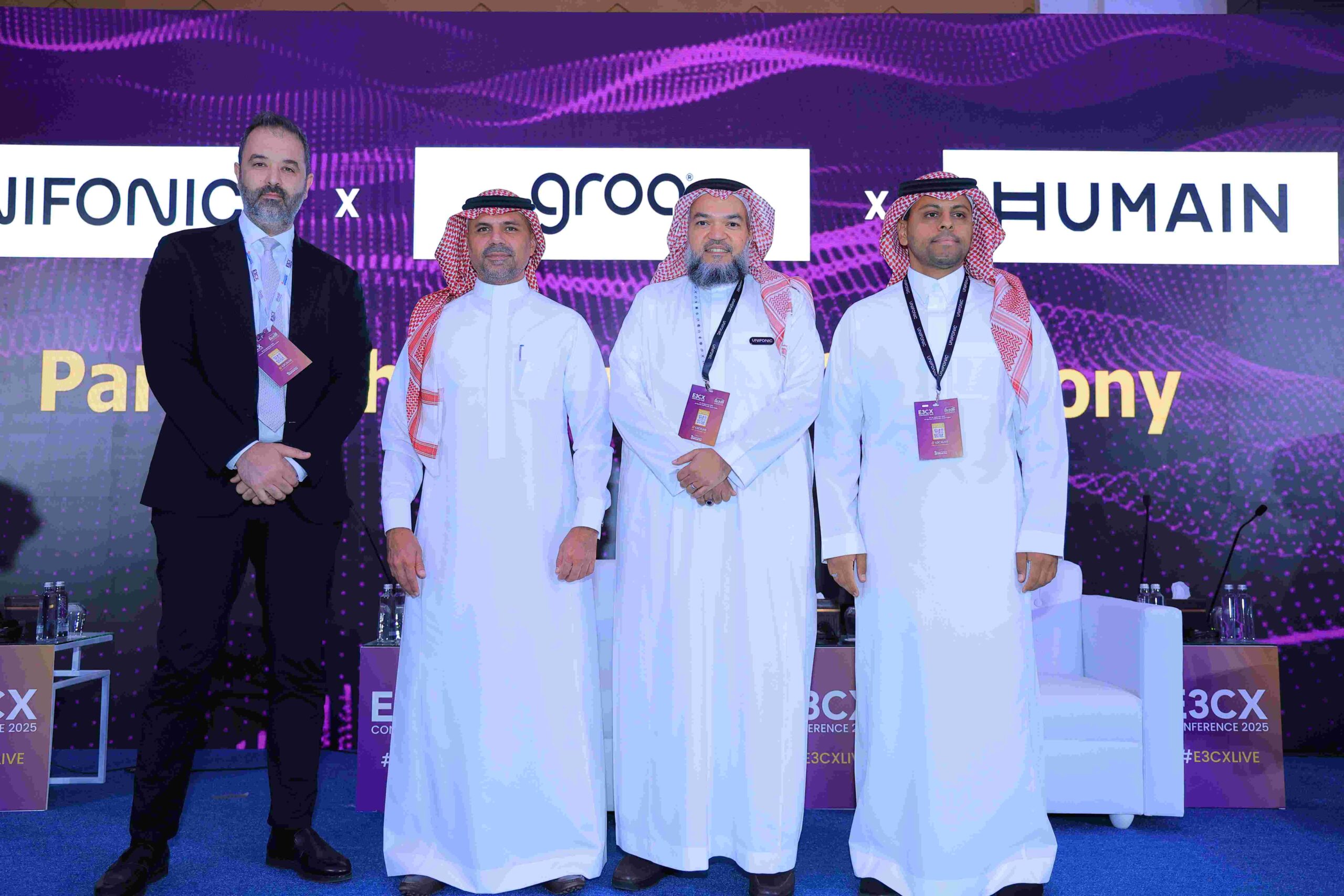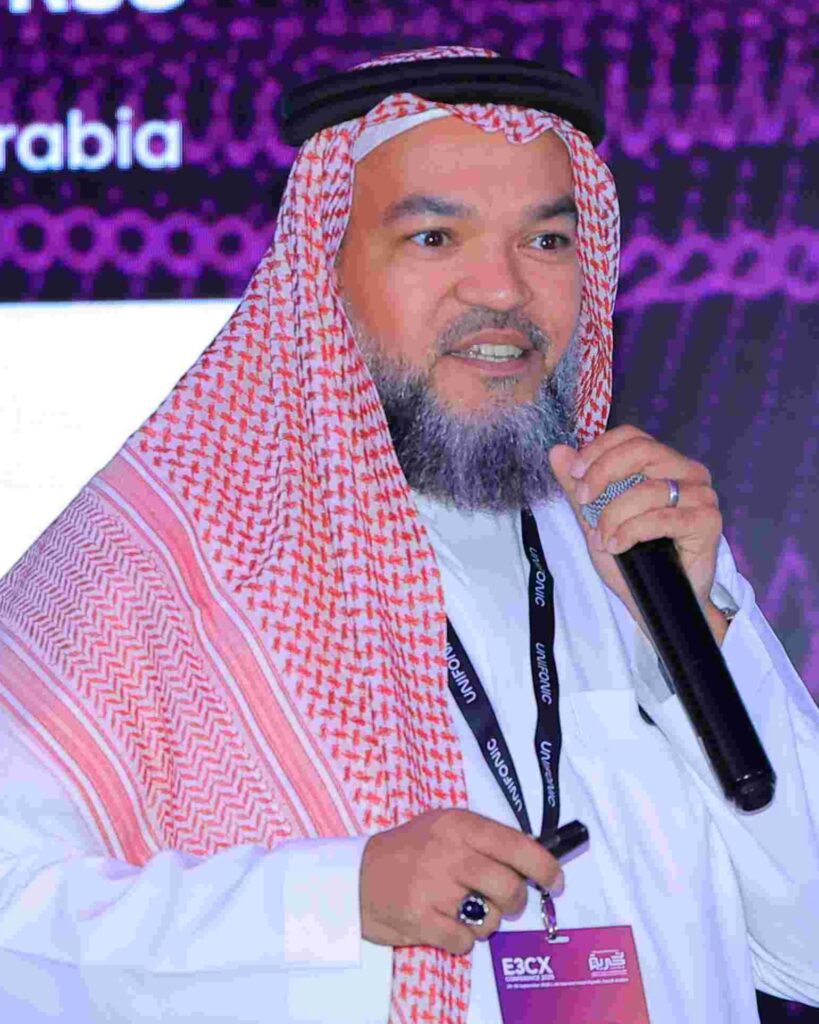Tech Interviews
Microsoft’s Positioning is Ideal for Innovative Enterprises
Microsoft Azure is a cloud computing service operated by Microsoft for application management via Microsoft-managed data centers. Tariq Halawani, Executive Director – Enterprise Solutions at Microsoft talks to The Integrator about the company’s interest in providing cloud solutions to enterprises in the UAE and other regions in the Middle East.
Digital transformation for enterprises is no longer an option but a necessity; cloud support becomes an integral part of it. How can Microsoft help small, medium, and large enterprises on this mission?
Small to medium-sized businesses are the backbone of economies, while larger enterprises facilitate diversified ways to generate revenue and boost the economy of scale. So, organizations must be enabled to seamlessly conduct operations through the power of the Cloud.
Microsoft’s positioning within the regional digital landscape is ideal for innovative enterprises. Our Abu Dhabi and Dubai data centers place the trusted, versatile, intelligent Microsoft Cloud at the disposal of businesses looking to compete in the post-COVID world.
From the collaborative potential of Teams to the productivity of Office; from the business intelligence of Dynamics 365 to the pioneering capabilities of Azure’s IoT functions, and Cognitive Services’ chatbots – there’s something for every innovator.
Tell us how cloud-based infrastructure and platforms offered by Microsoft help businesses grow, improve flexibility, and increase profitability?
Cloud services give businesses the option of using and paying for only the tools they need to achieve their own individual goals. Controlling costs when businesses are at a nascent stage is important for their early cash flow and profitability.
Then, when brand recognition and revenues hit critical mass, smaller businesses can take their next steps by growing their technology stack to meet the needs of their next five-year plan.
Supporting short-term to long-term plans are the benefits of cloud services that improve efficiencies, cost savings, cyber-resilience, and secure access. These future-proof innovations allow businesses to fully harness the capabilities of AI, IoT, Blockchain, and augmented or virtual reality, providing a competitive edge while upholding privacy and security.
Kindly articulate hybrid cloud and differentiate it from multi-cloud services from a business perspective
Hybrid is a mix of different types of clouds like public and private clouds, while multi-cloud is a blend of several separate public clouds of the same type. For example, in a hybrid cloud, workloads and application services could run in a public cloud while data resides in a private cloud. In multi-cloud environments, the same solution would have both clouds being public.
For businesses, it is all about the choice between multiple providers, or a single trusted partner to achieve consistency. The decision to be made by businesses depends on their specific chief concerns such as cost, security, reliability, performance, time, and effort in migration to the cloud. Be it hybrid or multi-cloud, cost and security remain the highest of priorities from the lot. Therefore, for those who have higher regulatory standards, hybrid cloud services may be ideal, while cost concerns can lean toward the multi-cloud service option. In terms of cloud architecture, it is worth noting that services such as Microsoft Azure Arc can help manage these complex architecture seamlessly, no matter what cloud services, providers, and components are involved.
Speak about the collaborations that Microsoft have made to strengthen its cloud deployment and support services in the UAE and other GCC countries
Our activities in these areas are multifaceted, however, skilling is at the core of our efforts, especially through the Microsoft Cloud Society. We have partnered with the MADRASA free e-learning platform and collaborated with the One Million Arab Coders initiative as part of our ongoing commitment to skilling and upskilling.
Bolstering these skills is also found in the AI School, exploring the latest AI technology at a personalized pace at any level. This in-depth learning path navigates through the essential concepts of AI and machine learning services, preparing individuals to discover various innovative ways to develop AI solutions from the power and potentials of the cloud.
Building cloud skills is integral to transforming a business into a cost-effective, energy-efficient, and secure organization that delivers performance driven by innovation. These initiatives empower a generation of future leaders to contribute to the UAE’s digital economy, enabling them to excel in cloud development skills and creating greater prospects for the nation’s digital endeavors.
Discuss the scope of cloud-based infrastructure and related solutions in the post-pandemic era
Cloud is now the fastest way to develop digital experiences for employees and customers. And in the modern era, where B2C and B2B customers and the employees that serve them are mostly digital natives, saying something is the “fastest way” is tantamount to saying it is the “only way” because digital natives are not known for their patience.
Business employees will also be empowered to achieve more through the new challenges and demands of remote work. Untethered to a physical location, the right cloud service can provide equal to higher efficient productivity through communication tools. Within this process, organizations will have fresher sources of innovation and insights that can proactively connect with customers and cater to their specific needs.
Migrating and fully operating in the cloud will also optimize costs by unlocking new degrees of productivity. Reducing the overall infrastructure costs will drive profitably and growth for an organization. And safeguarding these stages of transformation is also of utmost importance, for example, the way Azure invests heavily in security and compliance within a cloud framework.
The agility, security, and cost-effectiveness of the intelligent cloud are the new normal because of the pandemic. Organizations must be equipped with the right solutions to be able to take on today’s challenges and be prepared for any future hurdles that can be faced with the power of the cloud, with confidence and resilience.
Tech Interviews
From Reactive to Predictive: How AI is Revolutionizing Cybersecurity in the Middle East

Exclusive Interview with Assad Arabi, Regional Managing Director Africa, Mediterranean and CIS, Trend Micro

What are your impressions of GITEX this year?
GITEX has always been an incredible platform, but this year feels different, there’s more energy, more excitement, and a clear focus on meaningful business conversations. The engagement level is impressive, and it’s great to see the region’s digital ecosystem evolving so rapidly.
What is the current state of cybersecurity in the Middle East and Africa?
It’s getting increasingly complex. We’re seeing more AI-driven, sophisticated cyberattacks that are harder to detect and mitigate. Last year alone, Trend Micro detected around 1.35 billion cyber threats in MEA , a staggering figure considering even one major attack can disrupt entire organisation. Globally, cybercrime is projected to cost around USD 10 trillion, which is an enormous economic loss.
This growing threat landscape demands a new approach. Instead of reacting after attacks occur, we’re shifting to a predictive cybersecurity model anticipating threats before they strike. By identifying patterns and alerting organisations in advance, we’re helping them safeguard critical data and infrastructure proactively.
What key innovations is Trend Micro showcasing at GITEX 2025?
This year is special for us. Our flagship Trend Vision One platform, known as the world’s most comprehensive cybersecurity platform, continues to evolve. It integrates multiple security layers from endpoint and server to cloud, network , data, email, IoT, and OT security — into one unified ecosystem.
The latest innovation we’re showcasing is our Agentic SIEM solution, launched just last month. Among the first of its kind globally, it leverages AI to automate rule creation, configurations, and response actions. This will revolutionise how SOC teams operate paving the way for fully autonomous security operations powered by AI.
What emerging trends are shaping 2025?
One of the most concerning trends is the rise of AI-driven threats, especially deepfakes. Attackers can now replicate voices, faces, and data to create what we call “malicious digital twins.” Imagine a video that looks and sounds exactly like you, used to deceive others , it’s a new frontier of cyber risk. We’re actively developing tools to detect and neutralise these threats before they cause harm.
How is Trend Micro leveraging AI to stay ahead of evolving attacks?
AI is central to everything we do. We’ve developed systems that not only detect but quantify cyber risk. For example, organisations receive a numerical cybersecurity score , say, 67 today and 70 tomorrow ,helping them see risk fluctuations in real time and take corrective action.
We’re also creating cybersecurity digital twins, replicating clients’ digital cyber security environment on our platform to safely simulate attacks and test resilience. This enables predictive defence and faster response.
What defines the next generation of cybersecurity?
The next era of cybersecurity will be defined by intelligence and foresight. Having advanced tools isn’t enough; you need actionable threat intelligence. It provides visibility into what’s happening, what could happen, and where your vulnerabilities lie. This shifts cybersecurity from reactive to truly preventive.
How is AI transforming the way organisations predict threats?
At Trend Micro, AI is embedded across our entire ecosystem from endpoint and network protection to cloud, OT, and IoT security. We collect native telemetry data into a central data lake and apply AI models and threat intelligence to correlate anomalies and detect hidden attacks.
Our proprietary Cybertron large language model (LLM) is a breakthrough. It analyses threats contextually, offering insights tailored to each organisation rather than generic alerts. It empowers security teams to identify, prevent, and neutralize threats before they materialize. This advanced level of intelligence was unimaginable just two years ago, and it’s redefining how cybersecurity protection should be perceived .
What are the biggest challenges organisations face in a cloud-native environment?
The biggest hurdle is mindset. Many organisations still use traditional security methods for cloud environments and that simply doesn’t work. Trend Micro offers a complete cloud-native security portfolio covering applications, workloads, containers, storage, and configuration. Our attack surface and exposure management tools continuously assess cloud posture, identify risks, and alert teams before vulnerabilities are exploited.
What impact has the Trend Vision One AI Companion delivered?
The AI Companion acts like our version of ChatGPT for cybersecurity analysts. They can ask questions such as “What does this alert mean?” or “What should I do next?” and receive instant, actionable guidance or even have the system perform those actions automatically. This has dramatically reduced response times and helped close the cybersecurity skills gap, enabling junior analysts to perform at senior levels.
What sets Trend Micro apart from other cybersecurity companies?
As a Japanese company, precision and commitment are part of our DNA. For over 37 years, cybersecurity has been our singular focus. If we enter a segment, it’s because we intend to lead it.
Our leadership is consistently recognised by Gartner, Forrester, and IDC across multiple domains from endpoint and network to IoT and attack surface management. What truly differentiates us is our natively integrated ecosystem, which simplifies management, enhances visibility, increase the protection , and strengthens customer confidence.
Tech Interviews
AI is Not an Add-On, But an Enabler!

In a brief interview at GITEX, Technology Integrator speaks with expert Shivdayal Charan, Director of Middle East at Torry Harris Integration Solutions on how the company is enabling digital transformation across industries through modernization, AI enablement, and connected digital ecosystems.

1. Could you give us an overview of Torry Harris, what the company does, and its core areas of expertise?
At Torry Harris, our purpose is to make digital transformation real – grounded in business logic, scalable through technology, and outcome-driven. For over two decades, we have helped enterprises rebuild the connective tissue of their businesses – modernizing legacy systems, integrating data, and creating digital ecosystems that scale.
Our expertise is at the intersection of API-led integration, cloud modernization, and digital ecosystem enablement – foundations that turn technology landscapes into agile, interoperable networks. From telecom and finance to logistics and government, we help enterprises move beyond isolated systems to unified, intelligent architectures that enable real-time collaboration and innovation.
We often say that we don’t just integrate systems; we integrate with intent. Because true modernization isn’t about technology alone – it’s about creating coherence between business vision and digital execution. That’s what allows enterprises to innovate with confidence, move at market speed, and build resilience.
Headquartered in the US, with regional offices in Dubai and Riyadh, we’re deeply aligned with the Middle East’s digital transformation ambitions – simplifying digital complexities and helping public and private enterprises translate strategy into sustained progress.
2. What is one of the company’s latest core offerings?
Our flagship platform, SMART Souq, is where AI meets ecosystem thinking. SMART Souq is an AI-powered marketplace platform that enables organizations to design and scale digital ecosystems around themselves. It connects suppliers, partners, and customers into a single fabric where data, APIs, and services flow naturally.
The platform supports hybrid engagement models (such as B2B2C and G2B2C) and enables organizations to monetize APIs, data, and services as part of a larger digital value chain. Its embedded 4Sight intelligence layer combines personalization, conversational AI, and predictive insights, while its low-code framework allows business teams to configure user journeys, onboarding flows, and monetization models without heavy engineering lift.
Today, speed defines relevance. Enterprises can’t afford to prototype for months; they must launch at market pace and refine in motion. SMART Souq enables exactly that – moving from concept to deployment in weeks, not quarters.
Take a regional bank, for instance. With SMART Souq, it can evolve from being a service provider to an ecosystem hub – integrating insurance, auto finance, mortgages, and lifestyle services – all under one digital roof. What was once a transaction becomes an ongoing relationship, renewed every day through context and connection. That’s the future of marketplaces – less about transactions, more about context.
3. Could you elaborate on the key solutions you are showcasing at GITEX this year and how they are helping enterprises accelerate their digital transformation journeys?
This year at GITEX, we are prioritizing what we call the three levers of digital momentum – modernization, intelligent automation, and connected ecosystems.
Modernization is where agility begins – taking what’s already working and making it cloud and AI-ready. It’s not about starting over; it’s about starting smarter. Done right, modernization renews the core, embeds intelligence, and creates the conditions for speed and scale. It’s how banks cut release cycles, how cities deliver digital services, and how governments move from efficiency to experience.
Intelligent automation builds on that core. Through APIs and integration frameworks, we create a digital nervous system – a fabric where data, workflows, and partners move securely and in sync. When systems speak a common language, business starts to move as one.
And when that foundation is in place, ecosystems begin taking shape. SMART Souq turns these internal capabilities into external opportunities – enabling enterprises to co-create and monetize APIs, data, and services through a larger value network.
Modernize the core – Connect the fabric – Monetize the flow. That’s how transformation stops being a plan and becomes a pattern – one that organizations can repeat, refine, and scale.
3. Artificial Intelligence is a major focus across industries today. How is Torry Harris integrating AI into its offerings, and what value does this bring to your clients?
AI has moved from experimentation to expectation. The real question now is – how do enterprises embed it meaningfully, not just visibly?
At Torry Harris, AI is not an add-on but an enabler that runs through our entire portfolio. Our AI Factory helps enterprises industrialize adoption – combining automation, data pipelines, and decision intelligence into a single operational fabric. The goal is simple: measurable outcomes, not model counts. Efficiency that shows up in metrics, prediction that shows up in decisions, and personalization that enhances experience.
Our 4Sight analytics engine turns raw data into foresight. It learns from operational patterns, customer behavior, and market signals – helping enterprises anticipate demand instead of react. You can see this clearly in SMART Souq – its AI engine continuously learns from interactions, predicting needs and optimizing engagement in real time. In real estate, it might infer buyer intent; in logistics, it might optimize partner routes. AI here doesn’t replace human intuition but augments it.
And through our Agentic AI Services, we extend that intelligence across the enterprise, embedding it into operations, testing, integration, and decision systems. The result is AI that’s pragmatic, governed, and aligned to business rhythm, not hype cycles.
4. Could you share an example of a recent project where Torry Harris helped an enterprise modernize or integrate its systems, and what measurable impact it delivered?
A recent example I can reference comes from our work with NBQ – a leading regional bank that needed modernize its integration landscape for agility and scale – without dismantling what already worked.
We implemented a secure API management layer that unified systems and created real-time data exchange across the bank’s ecosystem. The results were tangible – 45% improvement in operational efficiency, 30% reduction in integration costs, and partner onboarding time cut from three days to one. More importantly, NBQ could launch new digital services 40% faster – a critical edge in a market where speed defines customer experience.
But the real change wasn’t technical; it was behavioral. NBQ stopped managing systems and began orchestrating outcomes. Teams moved faster, experiments carried less risk, and innovation turned from being occasional to repeatable.
Tech Interviews
How Unifonic Intelligence is Transforming Customer Experience in Saudi Arabia

Exclusive Interview with Ayman Hamdan, Co-founder of Unifonic

- How does E3 Customer Experience Conference showcase innovation and advance Saudi Arabia’s digital transformation goals?
The E3 Customer Experience (E3CX) Conference plays a crucial role in advancing Saudi Arabia’s digital transformation by serving as a dynamic marketplace where innovation, policy, and technology converge. For Saudi organisations, the event offers the opportunity to explore real-world solutions, moving beyond abstract concepts to evaluate validated use cases and production-ready technologies. It brings together key stakeholders, including vendors, system integrators, government agencies, and enterprise buyers to collaborate on critical issues such as compliance, integration, and security.
Crucially, the conference supports Saudi Vision 2030’s emphasis on secure, locally governed digital services and a growing domestic software as a service (SaaS) ecosystem. It enables partnerships between platform providers, local cloud operators, telcos, and system integrators that address national priorities like data residency. For policymakers and regulators, E3CX provides a neutral, insight-rich platform to observe market capabilities, refine regulatory frameworks, and accelerate public-sector procurement. Sessions focus on operational readiness and business impact, including service-level agreements (SLAs), security, pilot-to-production timelines, and demonstrable return on investment (ROI).
By bringing together technical teams, buyers, and regulators under one roof, the conference shortens procurement cycles, fosters collaborative problem solving, and ensures that digital initiatives deliver measurable economic and social outcomes. Ultimately, E3CX is where Vision 2030’s digital ambitions are translated into scalable, impactful services for the Kingdom of Saudi Arabia.
- Where do you see CX in MENA in three years?
Over the next three years, customer experience (CX) in the MENA region will shift from being a set of separate channels to a smooth, ongoing conversation that follows customers wherever they are. Mobile messaging and voice will become the primary means of engagement across discovery, purchase, and support. Companies that treat these conversational journeys as a key part of their revenue strategy, rather than just support tools, will be the ones that succeed. AI will move beyond small tests to full-scale use, helping personalise interactions in real time while also meeting local regulations. This will result in faster responses, fewer false positives, and more localised customer experiences.
At the same time, Arabic-first design will become essential. Businesses that focus on dialect accuracy and culturally relevant design will see better engagement and conversion. Moreover, CX success will be measured by more than just satisfaction scores; business leaders will look closely at how chat and messaging contribute to revenue, customer retention, and cost efficiency. Data residency and local regulations will also play a bigger role in how companies choose their technology partners as governments and large enterprises will prioritise vendors that can demonstrate local hosting, audit logs, and clear data governance. While automation will handle routine tasks, skilled human agents will still be needed for complex or emotional conversations. Finally, CX will increasingly become tailored by industry, with sectors like banking, aviation, and government developing domain-led playbooks for conversational automation, featuring specialised models, compliance patterns and measurement frameworks. Thus, early adopters are poised to win procurement and set an example for others to follow.
- With Vision 2030 shaping the SaaS market, how is Unifonic enabling better CX for Saudi businesses and public sector buyers?
With Vision 2030 driving the transformation of the software as a service (SaaS) market in Saudi Arabia, Unifonic is uniquely positioned to enable better customer experience (CX) for both Saudi businesses and public sector buyers. The growing demand for SaaS solutions in the MENA region is fuelled by the rise of new digital models, and Vision 2030 has further accelerated this by emphasising the need for secure, locally compliant, and scalable digital services.
Unifonic meets these demands by offering a unified conversational platform designed for production from day one. Our technology prioritises Arabic-first experiences, ensuring conversational journeys resonate across different dialects and feel natural to users. This focus on language and cultural relevance reduces friction, increases engagement, and drives higher conversion rates across customer acquisition and support workflows. For the public sector and large enterprises, we have adopted a collaborative go-to-market approach that includes joint pilot design, clear key performance indicators (KPIs), and quick iteration cycles. This enables stakeholders to validate the platform’s impact before committing to scale.
On the ecosystem front, Unifonic works closely with local cloud operators, telecommunications companies, and system integrators to integrate seamlessly with existing infrastructure and accelerate deployment. We also invest in developer programs, training initiatives, and accelerator partnerships to nurture local talent, directly supporting Saudi Vision 2030’s objective of job creation.
Unifonic operates at the intersection of language, compliance, and production readiness. We empower Saudi organisations to move their conversational projects beyond experimentation into scalable, measurable services that improve both citizen and customer experiences, fully aligned with the Kingdom’s digital transformation, economic growth, and workforce development goals.
- What is Unifonic Intelligence?
Unifonic Intelligence is the AI engine that powers the Unifonic customer engagement platform. It brings together four key modules: the AI control centre for governance and oversight, AI chatbot for customer-fa cing virtual agents, agent copilot to assist human agents in real time, and a content creator with marketing recommendations to automate and personalise campaign messaging. Together, these components empower businesses to deliver faster, smarter, and more personalised customer experiences.
What sets the platform apart is its underlying AI framework, which uses a retrieval-augmented generation approach to ensure responses are grounded in the customer’s real data and up-to-date enterprise knowledge. We carefully evaluate and select leading open-source large language models (LLMs), optimising them for Arabic dialects and region-specific intents. This results in conversational AI that not only understands local nuances but also delivers factually accurate interactions. Early adopters can expect enhanced engagement, improved customer satisfaction and better business decisions through data-driven insights.
- How does the partnership with Humain and Groq enable this platform and what does it mean for customers?
Our partnership with Humain and Groq is both a technical and commercial enabler that strengthens the Unifonic AI Powered Customer Engagement Platform with unmatched performance, security, and scalability. Groq provides industry-leading inference hardware and performance engineering, focused specifically on inference execution, which is the critical backbone of live conversational systems. This means significantly faster model execution, lower latency, and scalable throughput, all of which are essential for delivering high-quality customer experiences. At the same time, Humain ensures that these capabilities are deployed locally, with full integration into regional compliance frameworks, and enterprise-grade operational controls across Saudi Arabia and the wider MENA region.
Groq and Humain led the development of the inference architecture, performance tuning and deployment playbooks. While Groq tuned serving layers for peak low-latency performance, Humain implemented the local hosting, networking and operational controls required by enterprise customers. This joint approach allows us to push new model variants from testing to production in days rather than months, all while maintaining full audit trails and governance that regulated enterprises require. For customers, the benefits are measurable: inference and model serving are hosted in Saudi-based environments, preserving data residency; response times are faster, improving user satisfaction and reducing drop-off; and Arabic language support is significantly enhanced because of regionally-tuned models and dialect validation.
Ultimately, this partnership gives Unifonic the infrastructure and operational foundation to deliver Arabic-first, compliant AI for enterprises across the region. At the upcoming E3 Customer Experience (E3CX) Conference 2025, we will be showcasing these engineering achievements and inviting customers to join our early adopter program to start delivering measurable business outcomes.
-

 Tech News1 year ago
Tech News1 year agoDenodo Bolsters Executive Team by Hiring Christophe Culine as its Chief Revenue Officer
-

 VAR7 months ago
VAR7 months agoMicrosoft Launches New Surface Copilot+ PCs for Business
-

 Tech Interviews2 years ago
Tech Interviews2 years agoNavigating the Cybersecurity Landscape in Hybrid Work Environments
-

 Tech News4 months ago
Tech News4 months agoNothing Launches flagship Nothing Phone (3) and Headphone (1) in theme with the Iconic Museum of the Future in Dubai
-

 Tech News2 years ago
Tech News2 years agoBrighton College Abu Dhabi and Brighton College Al Ain Donate 954 IT Devices in Support of ‘Donate Your Own Device’ Campaign
-

 Editorial11 months ago
Editorial11 months agoCelebrating UAE National Day: A Legacy of Leadership and Technological Innovation
-

 VAR1 year ago
VAR1 year agoSamsung Galaxy Z Fold6 vs Google Pixel 9 Pro Fold: Clash Of The Folding Phenoms
-

 Cover Story8 months ago
Cover Story8 months agoUnifonic Leading the Future of AI-Driven Customer Engagement














